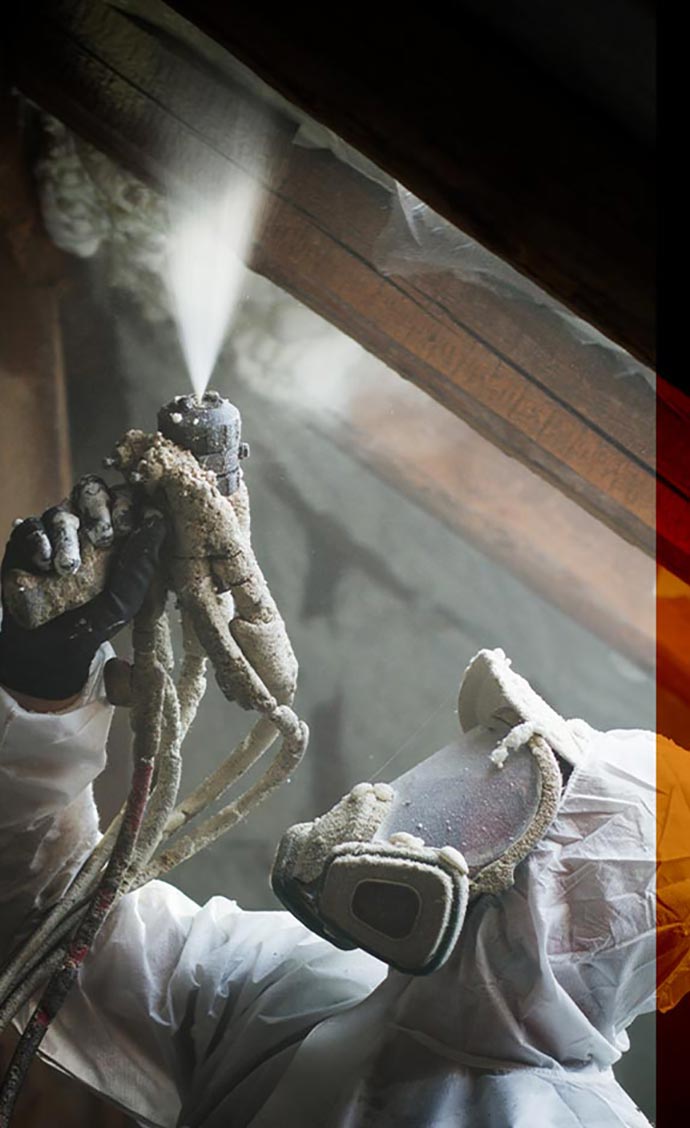


Remember when a pink panther held the main player in home insulation? Those days are long gone. These days, homeowners, contractors, and building scientists (the experts who study home energy performance) are looking at the benefits of foam insulation. This newly popular home insulation can come in many forms. Let’s consider the differences between two popular options: spray foam and rigid foam. More specifically, we’ll compare closed-cell spray foam, which requires two separate components to be mixed during application, and the rigid foam insulation boards that come in many different thicknesses.
Both two-component spray foam and rigid foam can be used to improve home energy performance. But, sometimes, deciding which type of foam is best for a particular application can be difficult.
Two-part spray foam is best suited for big jobs and provides excellent air sealing and insulation. It is often sprayed against open framing, as in this attic installation.

"*" indicates required fields
Proper insulation is vital for your home’s energy efficiency, and nobody knows insulation better than Reed’s Sprayfoam Insulation. Call or email us today to arrange a Free Estimate for home insulation in Charleston, Lexington, Georgetown, Johnson City, and other areas, including Richmond, Ashland, Frankfort, Barboursville, Huntington, Paintsville, Mt. Sterling, and more.
Be sure to check out our other content to help you decide on the best spray foam insulation for your needs and the best spray foam contractor in Kentucky, West Virginia, Ohio, and Tennessee.
Choosing between spray foam and rigid foam board insulation is a pivotal decision impacting your home’s energy efficiency, comfort, and long-term savings. At Reed’s Sprayfoam Insulation, our experienced insulation contractors specialize in guiding you through this choice to make sure you make an informed decision tailored to your specific needs.
Spray foam insulation excels at sealing even the tiniest cracks and gaps in wall cavities, creating a superior air barrier that substantially reduces air leaks. This comprehensive approach not only enhances your home’s energy efficiency but also significantly lowers your energy costs over time.
On the other hand, rigid foam boards or panels provide excellent thermal resistance and can be customized to fit specific areas. Our experts understand the nuances of both spray foam and rigid insulation, enabling us to evaluate your unique requirements and recommend the most cost-effective solution tailored to your budget, helping you save money in the long run.
Reed’s Sprayfoam Insulation ensures that your insulation needs are met with precision and expertise. Whether you opt for spray foam or rigid insulation board, our dedicated team is committed to creating a well-insulated home, free from air leaks and providing you with the utmost comfort and energy savings. Contact us to have an insulation contractor guide you through the decision-making process, enabling you to make an investment that improves your home’s insulation and contributes to substantial long-term savings.
Call or contact us online to schedule a Free Estimate for spray foam insulation in Georgetown, Lexington, Charleston, Ashland, Richmond, Barboursville, Frankfort, Paintsville, Mt. Sterling, Huntington, and nearby areas.
We can also identify the other areas in your home that are wasting your home’s energy. Reed’s Sprayfoam Insulation is dedicated to helping you prioritize your home’s energy upgrades and repairs.